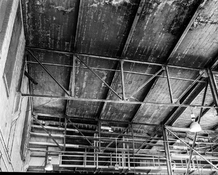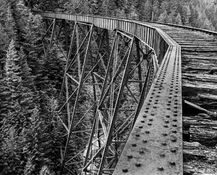Huss, looking at scans to determine the qualities of a film is like listening to a recording of music done through speakers with a microphone pointed at them on YouTube, to determine the quality of the recording.
It’s adding so many layers of interpretation and artifacts on top that it gets pointless.
Sure, it can be done very well, to the point where if it’s done to a strict standard and to the highest ability, it could provide you with some semblance of an idea of the film or recording.
But no such standard exists, and we never know the chain or can be certain of the details anyway.
Often you end up with as much of an impression of the scanner (or the speakers and the room) as of the films subtle and not so subtle qualities.
You can do a sort of fudged overall amalgamation and statistical mean impression by looking at lots of examples online.
But more often than not, even that turns out to be false or a half truth at best.
What’s more, a non trivial concern is getting your photos and images stolen if you post them. Even (or especially perhaps) a test reports image material is too valuable to have them just appropriated by random strangers.
It’s adding so many layers of interpretation and artifacts on top that it gets pointless.
Sure, it can be done very well, to the point where if it’s done to a strict standard and to the highest ability, it could provide you with some semblance of an idea of the film or recording.
But no such standard exists, and we never know the chain or can be certain of the details anyway.
Often you end up with as much of an impression of the scanner (or the speakers and the room) as of the films subtle and not so subtle qualities.
You can do a sort of fudged overall amalgamation and statistical mean impression by looking at lots of examples online.
But more often than not, even that turns out to be false or a half truth at best.
What’s more, a non trivial concern is getting your photos and images stolen if you post them. Even (or especially perhaps) a test reports image material is too valuable to have them just appropriated by random strangers.
Last edited:







 :
: : Both a linear curve (without "upswing" in the highlights) and a semi-compensating (or even full compensating) curve are also possible with Acros II:
: Both a linear curve (without "upswing" in the highlights) and a semi-compensating (or even full compensating) curve are also possible with Acros II:
